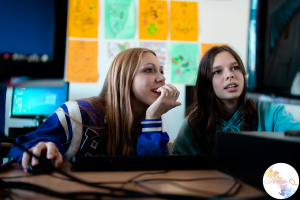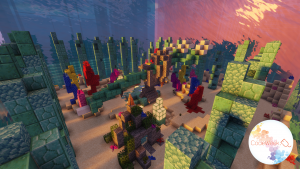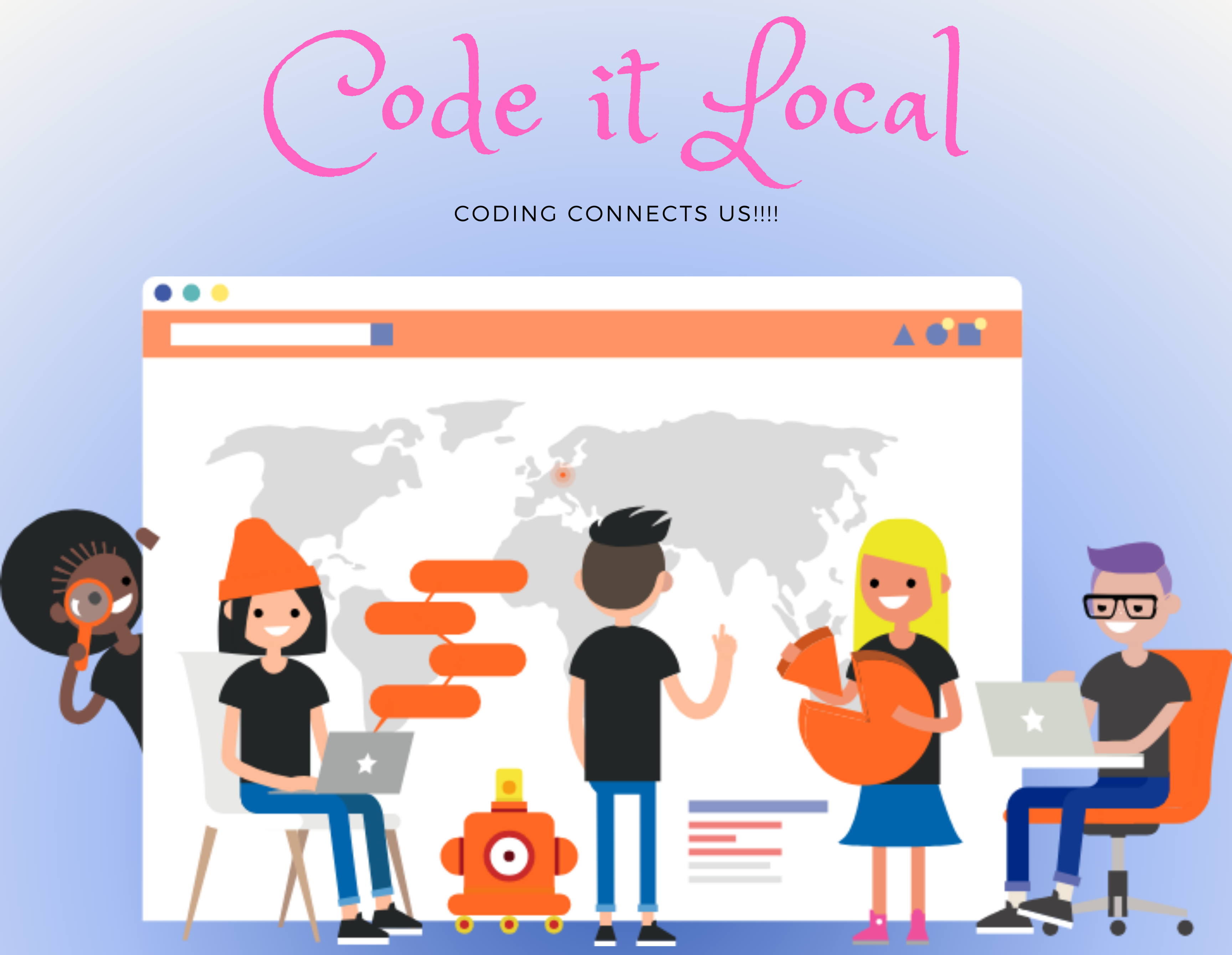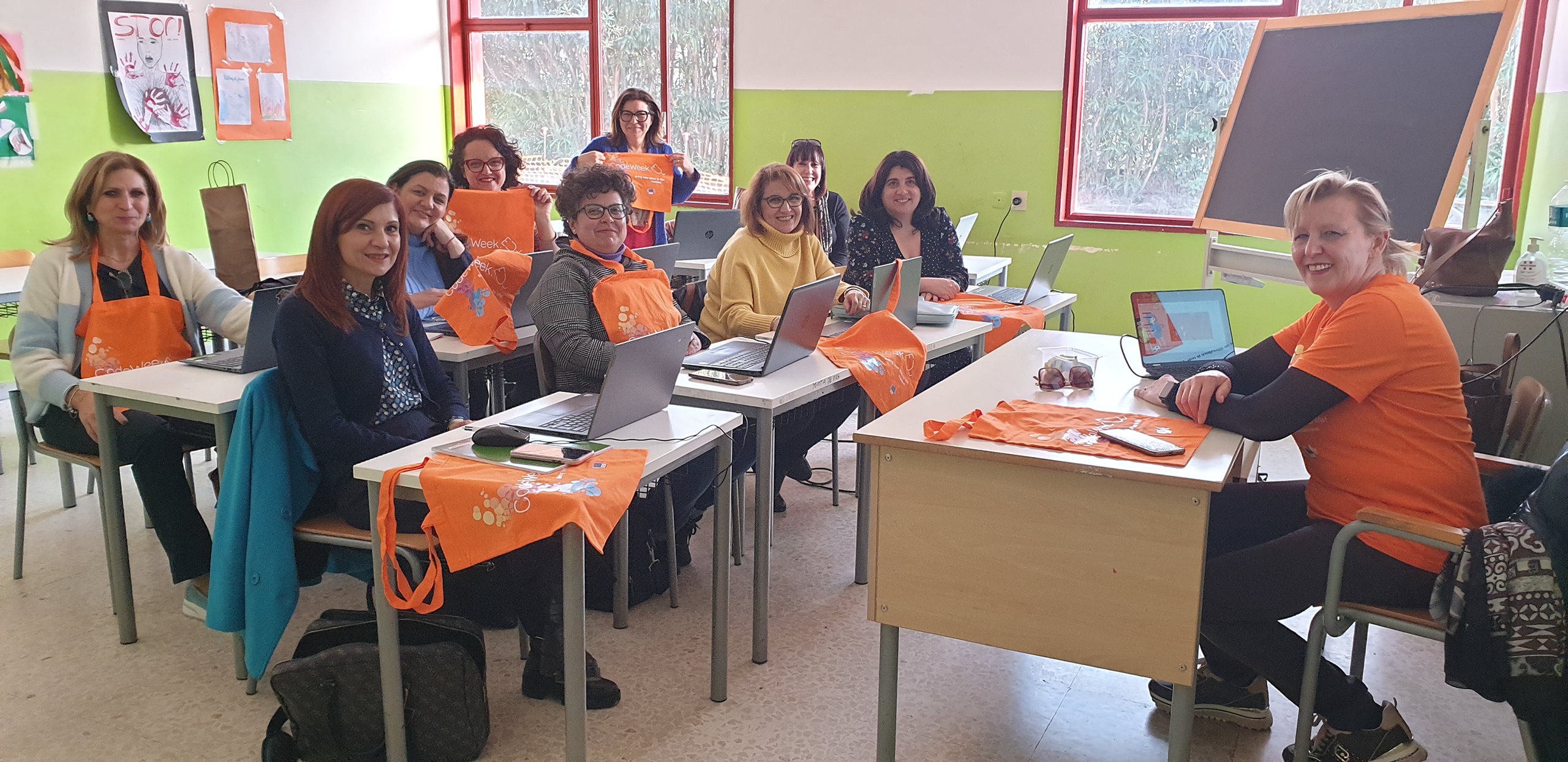The Lost City of Code – part 1
Publication date: November 17, 2023
Our School
#petrikcodeweek, which has become the trademark of our school (Petrik Lajos School in Budapest) and has achieved national recognition over the years, has as its primary goal the dismantling of myths surrounding coding and the inclusion of as many female students as possible in the program.
This is done by building activities centered around algorithmic thinking into a thematic, cross-disciplinary, problem-solving-focused theme week. Many people are apprehensive when they hear the word “coding” and can’t imagine its presence beyond the world of computer science. They often believe that it’s something only computer scientists understand.

A great success
At Petrik, we’ve been refuting this misconception for six years now. To our great pride, due to the efforts of previous years, the “seatsspots” for this year’s theme week were filled within 45 minutes, and the percentage of female participants exceeded 25% once again, including both organizing teachers and students. It’s also a joy to see that the organizers of the Coding Week are predominantly women, and most of them are not computer science majors. We were very happy to welcome non-computer science students again, who may not have had a clear idea of what awaited them during the week.

The lost city of Atlantis
This school year, our theme was the construction of the lost city of Atlantis: decoding its mystery with a series of exciting tasks and challenges that require offline, online, and algorithmic thinking.
Like in previous years, the participants were assisted by experienced mentor students from higher grades, and experienced student organizers took charge of the daily tasks.
On the first day of this year’s Coding Week, the teams formed their sailor crews, who immediately began creating their logos and designing their submarines in 3D. Then came one of the major tasks of the week: building MineAtlantis – here, on a Minecraft server, they could collectively and side by side create the submerged city of Atlantis, which existed so far only in their minds.
Then, on the 2nd day of #petrikcodeweek, the teams faced several challenges. They had to build the Pillars of Heracles in a DIY manner, beyond which, according to legend, Atlantis is located. Once completed, these pillars were illuminated with micro:bit-controlled LEDs to guide the submarines. Several of the computer science competitors encountered micro:bit for the first time, and thanks to the ingenuity of non-computer science students, they completed the tasks almost simultaneously.
Furthermore, every day, participants looked for the “Sea-eggs” hidden on the Petrik website (equivalent to the hidden easter eggs typical in gaming world), which were daily tasks. The teams received extra points for solving them. Each day, new cross-disciplinary challenges awaited the teams (arranged in a Turchen calendar). And, one of the main objective was to make the competition more equal between computer scientists and non-computer scientists.

A summary of the feeling surrounding our EU Code Week can be felt in this video:
https://www.youtube.com/watch?v=h8F9OTq5bp4&t=3s
Finally, on the 3rd day, to decipher the codes found on the Pillars of Heracles, an Android application had to be developed using App Inventor. If this was successful, they could embark on a quick treasure hunt in the school, which required speed and memory.
The code-breaking app decrypted a poem by Dániel Varró about the beauties of the IT specialization (“Adattudós,” from the book “Ha nagy leszek, szoftvertesztelő leszek“), and the teams had to recite the 8 lines by heart to the Deputy Headmaster at the finish line. Meanwhile, the construction of MineAtlantis continued every day.
Days 4-5 plus the final results are to be found in the second part of the blog entry.

For more information, visit our school’s website: https://petrik.hu/kategoria/egyeb/projekt/
Written by: Eva Toth, leading teacher, Hungary.


